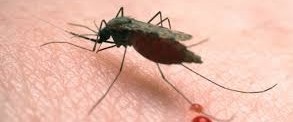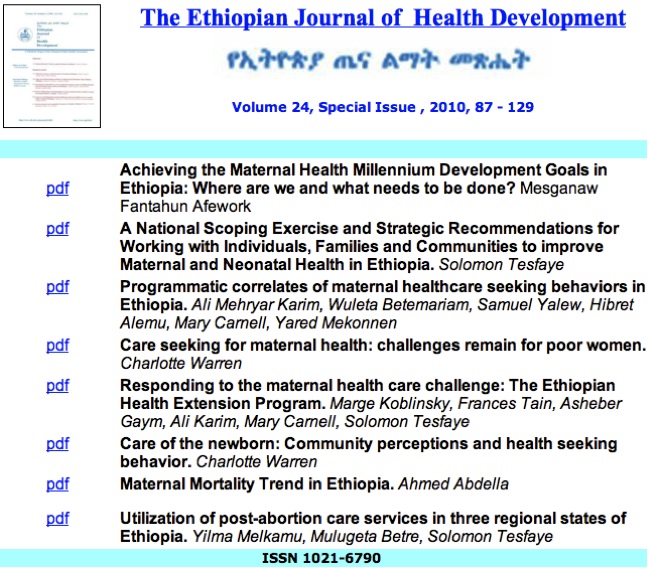This Bibliography on the Konso aims to include literature on a wide range of topics on the Konso people and Konso area of south Ethiopia.
It will regularly be updated.
October 25, 2009:
Agriculture (3)
1. Amborn H. Agricultural intensification in the Burji-Konso cluster of south-western Ethiopia. Azania. 1989 Jan 1.
2. Asfaw T. Understanding Farmers. Explaining Soil and Water conservation in Konso, Wolaita and Wello …. librarywurnl. 2003 Jan 1.
3. Kelly V, Jayne TS, Ababa A, Demeke M, Said A, Valle JCL, et al. Grain Market Research Project. 1999 Feb 2.
Anthropology (4)
1. Amborn H. Wandlungen im sozio-okonomischen gefuge der bevolkerungsgruppen im Gardulla-Dobase-Horst in Sudaethiopien. Paideuma. 1976;22:151-61.
2. Amborn H. Concepts in wood and stone: Socio-religious monuments of the Konso of Southern Ethiopia. Zeitschrift für Ethnologie. 2002 Jan 1.
3. Hallpike R, Christopher. The Konso of Ethiopia: a study of the values of a Cushitic people. 1972.
4. Hallpike R, C. The Konso of Ethiopia: A Study of the Values of an East Cushitic People; 2008.
Evolution (3)
1. Brown F, Fuller C. Stratigraphy and tephra of the Kibish Formation, southwestern Ethiopia. J Hum Evol. 2008 Sep 1;55(3):366-403.
2. Suwa G, Asfaw B, Beyene Y, White TD, Katoh S, Nagaoka S, et al. The first skull of Australopithecus boisei. Nature. 1997 Oct 2;389(6650):489-92.
3. Wood B, Lieberman D. Craniodental variation in Paranthropus boisei: a developmental and functional perspective. Am J Phys Anthropol. 2001 Sep 1;116(1):13-25.
Health (17)
1. Ali A, Ashford R. Visceral leishmaniasis in Ethiopia. I. Cross-sectional leishmanin skin test in an endemic locality. Ann Trop Med Parasitol. 1993 Apr 1;87(2):157-61.
2. Ali A, Ashford R. Visceral leishmaniasis in Ethiopia. II. Annual leishmanin transformation in a population. Is positive leishmanin reaction a life-long phenomenon? Ann Trop Med Parasitol. 1993 Apr 1;87(2):163-7.
3. Ali A, Ashford R. Visceral leishmaniasis in Ethiopia. III. The magnitude and annual incidence of infection, as measured by serology in an endemic area. Ann Trop Med Parasitol. 1994 Feb 1;88(1):43-7.
4. Ali A, Ashford R. Visceral leishmaniasis in Ethiopia. IV. Prevalence, incidence and relation of infection to disease in an endemic area. Ann Trop Med Parasitol. 1994 Jun 1;88(3):289-93.
5. Anderson TF. Kala Azar in the East African Forces. The East African Medical Journal. 1945;20:172-5.
6. Berhe N, Abraham Y, Hailu A, Ali A, Mengistu G, Tsige K, et al. Electrocardiographic findings in Ethiopians on pentavalent antimony therapy for visceral leishmaniasis. East Afr Med J. 2001 Nov 1;78(11):608-10.
7. Gebre-Michael T, Lane RP, Frame IA, Miles MA. Leishmania donovani infections in phlebotomine sandflies from the kala-azar focus at Aba Roba in Ethiopia: DNA probe compared with conventional detection methods. Med Vet Entomol. 1993 Jul;7(3):294-6.
8. Gebre-Michael T, Pratlong F, Lane RP. Phlebotomus (Phlebotomus) duboscqi (Diptera: Phlebotominae), naturally infected with Leishmania major in southern Ethiopia. Trans R Soc Trop Med Hyg. 1993 Jan-Feb;87(1):10-1.
9. Hailu A, Berhe N, Ali A, Gemetchu T. Use of Leishmania major derived leishmanin for skin test surveys of visceral leishmaniasis in Ethiopia. East Afr Med J. 1997 Jan 1;74(1):41-5.
10. Konso Community Health P. Nutrition survey in Bedinggelto. Nutrition survey in Bedinggelto; 1990.
11. Lindtjørn B. Severe measles in the Gardulla area of southwest Ethiopia. J Trop Pediatr. 1986 Oct;32(5):234-9.
12. Lindtjørn B. Famine in Ethiopia 1983-85: kwashiorkor and marasmus in four regions. Annals of Tropical Paediatrics. 1987;7:1-5.
13. Lindtjørn B. The usefulness of the mid upper arm circumference in measuring acute malnutrition. The Lancet. 1987;1985.
14. Lindtjørn B. Famine in southern Ethiopia 1985-6: population structure, nutritional state, and incidence of death \ldots. BMJ. 1990 Jan 1;301(1):1123-7.
15. Lindtjørn B, Olafsson J. Kala-azar in the Seggen and Woyto Valleys, South-west Ethiopia. EthiopMedJ. 1983;21:35-41.
16. Mikru F, Molla T, Ersumo M, Henriksen T, Klungseyr P, Hudson P, et al. Community-wide outbreak of Neisseria gonorrhoeae conjunctivitis in Konso district, North Omo administrative region. Ethiop Med J. 1991 Jan 1;29(1):27-35.
17. Tirados I, Costantini C, Gibson G, Torr SJ. Blood-feeding behaviour of the malarial mosquito Anopheles arabiensis: implications for vector control. Med Vet Entomol. 2006;20(4):425-37.
Sociology (1)
1. Kloos H, Abate T, Hailu A, Ayele T. Social and ecological aspects of resettlement and villagization among the Konso of Southwestern Ethiopia. Disasters. 1990;14(4):309-21.
This Bibliography on the Konso aims to include literature on a wide range of topics on the Konso people and Konso area of south Ethiopia.
It will regularly be updated.
October 25, 2009:
Agriculture (3)
1. Amborn H. Agricultural intensification in the Burji-Konso cluster of south-western Ethiopia. Azania. 1989 Jan 1.
2. Asfaw T. Understanding Farmers. Explaining Soil and Water conservation in Konso, Wolaita and Wello …. librarywurnl. 2003 Jan 1.
3. Kelly V, Jayne TS, Ababa A, Demeke M, Said A, Valle JCL, et al. Grain Market Research Project. 1999 Feb 2.
Anthropology (4)
1. Amborn H. Wandlungen im sozio-okonomischen gefuge der bevolkerungsgruppen im Gardulla-Dobase-Horst in Sudaethiopien. Paideuma. 1976;22:151-61.
2. Amborn H. Concepts in wood and stone: Socio-religious monuments of the Konso of Southern Ethiopia. Zeitschrift für Ethnologie. 2002 Jan 1.
3. Hallpike R, Christopher. The Konso of Ethiopia: a study of the values of a Cushitic people. 1972.
4. Hallpike R, C. The Konso of Ethiopia: A Study of the Values of an East Cushitic People; 2008.
Evolution (3)
1. Brown F, Fuller C. Stratigraphy and tephra of the Kibish Formation, southwestern Ethiopia. J Hum Evol. 2008 Sep 1;55(3):366-403.
2. Suwa G, Asfaw B, Beyene Y, White TD, Katoh S, Nagaoka S, et al. The first skull of Australopithecus boisei. Nature. 1997 Oct 2;389(6650):489-92.
3. Wood B, Lieberman D. Craniodental variation in Paranthropus boisei: a developmental and functional perspective. Am J Phys Anthropol. 2001 Sep 1;116(1):13-25.
Health (17)
1. Ali A, Ashford R. Visceral leishmaniasis in Ethiopia. I. Cross-sectional leishmanin skin test in an endemic locality. Ann Trop Med Parasitol. 1993 Apr 1;87(2):157-61.
2. Ali A, Ashford R. Visceral leishmaniasis in Ethiopia. II. Annual leishmanin transformation in a population. Is positive leishmanin reaction a life-long phenomenon? Ann Trop Med Parasitol. 1993 Apr 1;87(2):163-7.
3. Ali A, Ashford R. Visceral leishmaniasis in Ethiopia. III. The magnitude and annual incidence of infection, as measured by serology in an endemic area. Ann Trop Med Parasitol. 1994 Feb 1;88(1):43-7.
4. Ali A, Ashford R. Visceral leishmaniasis in Ethiopia. IV. Prevalence, incidence and relation of infection to disease in an endemic area. Ann Trop Med Parasitol. 1994 Jun 1;88(3):289-93.
5. Anderson TF. Kala Azar in the East African Forces. The East African Medical Journal. 1945;20:172-5.
6. Berhe N, Abraham Y, Hailu A, Ali A, Mengistu G, Tsige K, et al. Electrocardiographic findings in Ethiopians on pentavalent antimony therapy for visceral leishmaniasis. East Afr Med J. 2001 Nov 1;78(11):608-10.
7. Gebre-Michael T, Lane RP, Frame IA, Miles MA. Leishmania donovani infections in phlebotomine sandflies from the kala-azar focus at Aba Roba in Ethiopia: DNA probe compared with conventional detection methods. Med Vet Entomol. 1993 Jul;7(3):294-6.
8. Gebre-Michael T, Pratlong F, Lane RP. Phlebotomus (Phlebotomus) duboscqi (Diptera: Phlebotominae), naturally infected with Leishmania major in southern Ethiopia. Trans R Soc Trop Med Hyg. 1993 Jan-Feb;87(1):10-1.
9. Hailu A, Berhe N, Ali A, Gemetchu T. Use of Leishmania major derived leishmanin for skin test surveys of visceral leishmaniasis in Ethiopia. East Afr Med J. 1997 Jan 1;74(1):41-5.
10. Konso Community Health P. Nutrition survey in Bedinggelto. Nutrition survey in Bedinggelto; 1990.
11. Lindtjørn B. Severe measles in the Gardulla area of southwest Ethiopia. J Trop Pediatr. 1986 Oct;32(5):234-9.
12. Lindtjørn B. Famine in Ethiopia 1983-85: kwashiorkor and marasmus in four regions. Annals of Tropical Paediatrics. 1987;7:1-5.
13. Lindtjørn B. The usefulness of the mid upper arm circumference in measuring acute malnutrition. The Lancet. 1987;1985.
14. Lindtjørn B. Famine in southern Ethiopia 1985-6: population structure, nutritional state, and incidence of death \ldots. BMJ. 1990 Jan 1;301(1):1123-7.
15. Lindtjørn B, Olafsson J. Kala-azar in the Seggen and Woyto Valleys, South-west Ethiopia. EthiopMedJ. 1983;21:35-41.
16. Mikru F, Molla T, Ersumo M, Henriksen T, Klungseyr P, Hudson P, et al. Community-wide outbreak of Neisseria gonorrhoeae conjunctivitis in Konso district, North Omo administrative region. Ethiop Med J. 1991 Jan 1;29(1):27-35.
17. Tirados I, Costantini C, Gibson G, Torr SJ. Blood-feeding behaviour of the malarial mosquito Anopheles arabiensis: implications for vector control. Med Vet Entomol. 2006;20(4):425-37.
Sociology (1)
1. Kloos H, Abate T, Hailu A, Ayele T. Social and ecological aspects of resettlement and villagization among the Konso of Southwestern Ethiopia. Disasters. 1990;14(4):309-21.

